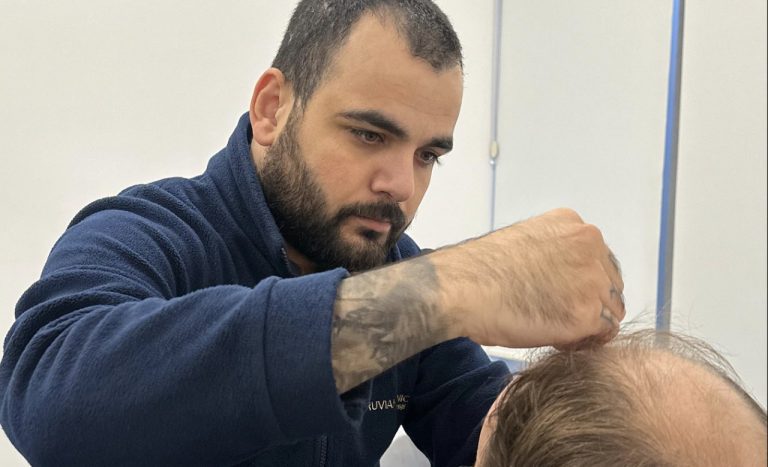
Understanding the Path to Studying Medicine in Australia
For aspiring healthcare professionals from around the globe, the opportunity to study medicine in Australia is an enticing proposition. Renowned for its high education standards, innovative research, and diverse medical programs, Australia is increasingly a preferred destination for international medical students. However, the journey toward obtaining a medical degree in Australia requires navigating complex pathways, admissions processes, and unique educational frameworks. This article serves as an essential guide for prospective students, outlining the educational requirements, admission processes, financial considerations, curriculum, and pathways to a successful medical career.
Overview of Medical Education Requirements
The path to becoming a doctor in Australia starts with understanding the educational framework governing medical programs. Applicants typically need to complete an undergraduate degree or a dedicated pre-medical program before entering a graduate medical program. While undergraduate prerequisites can fluctuate across institutions, foundational knowledge in sciences such as biology, chemistry, and physics is invariably advantageous. Furthermore, aspiring students must maintain a competitive academic record to enhance their candidacy.
After securing a place in a medical program, students will embark on a rigorous course of study that typically spans four to six years, depending on whether they are pursuing undergraduate or graduate entry. The first few years concentrate on foundational medical sciences, while later years focus on clinical training that involves patient interaction through placements in hospitals and clinics. By the end of their education, graduates will be well-prepared to undertake the responsibilities of a medical practitioner in Australia.
Key Considerations for International Students
International students face unique challenges when seeking to study medicine in Australia. Aside from fulfilling academic requirements, they must also navigate visa regulations, language proficiency tests, and cultural adaptations. The Australian Graduate Medical School Admissions Test (GAMSAT) is a key requirement for many schools and evaluates the competencies fundamental to success in medical education. Proficiency in English, validated through exams like IELTS or TOEFL, is mandatory for non-native speakers, as effective communication is essential in a healthcare setting.
Furthermore, international students should familiarize themselves with the healthcare system in Australia, including the role of general practitioners, specialists, and allied health services. Understanding the regulatory frameworks governing medical practice, such as registration with the Medical Board of Australia, also proves essential. Lastly, cultivating social connections and networking within the local medical community can maximize both academic and professional success.
University Selection Criteria for Medicine Programs
When it comes to selecting a medical school, applicants should consider a number of factors including rank, location, curriculum, and facilities. Australian universities offer various medical degrees, each with distinct characteristics and focus areas. Notable schools include the University of Sydney, Monash University, and the University of Melbourne, among others. Each university outlines specific selection criteria, often considering academic performance, GAMSAT scores, and relevant extracurricular activities.
Prospective students would benefit from researching the different teaching methodologies employed by various medical schools, such as problem-based learning or traditional lecture formats. Additionally, students should assess practical training opportunities offered within the curriculum, as hands-on experiences are crucial in shaping competent healthcare professionals.
Navigating Admission Processes for Medical Schools
Entrance Exams: GAMSAT vs. UMAT
Entrance examinations play a pivotal role in the admission processes for medical schools in Australia. The two primary exams are the Graduate Medical School Admissions Test (GAMSAT) and the Undergraduate Medicine and Health Sciences Admission Test (UMAT). The GAMSAT is predominantly aimed at graduate-entry programs and assesses candidates’ scientific knowledge and problem-solving abilities, alongside their reasoning and comprehension in humanities and social sciences.
On the other hand, UMAT is targeted at undergraduate programs and focuses on non-academic skills such as empathy, ethical judgment, and reasoning. Students must thoroughly prepare for their chosen assessment, utilizing practice tests, study groups, and preparatory courses to bolster their skills and confidence on exam day. Success in either of these examinations is typically a cornerstone of a competitive application.
Application Strategies for Success
Crafting a compelling application requires thoughtful strategy and preparation. Applicants should ensure their application aligns with the requirements specified by each medical school, paying attention to deadlines and guidelines. Personal statements or essays play a crucial role in reflecting an applicant’s motivation, commitment to medicine, and relevant experiences. This narrative provides an opportunity for candidates to convey their unique perspectives and aspirations, thus helping them stand out amongst a pool of talented peers.
In addition, gathering strong references from relevant professionals or educators, particularly those already in the medical field, can help substantiate an applicant’s capabilities and dedication. Prospective students should take the time to cultivate these relationships beforehand to ensure they can secure high-quality recommendations.
Interview Preparation and Techniques
The interview phase of medical school admission is often a stressful component yet serves as a vital opportunity for candidates to demonstrate their interpersonal skills, critical thinking, and genuine interest in medicine. Many universities adopt a Multiple Mini Interview (MMI) format, consisting of a series of short, timed stations that assess various competencies, including ethical reasoning and situational judgment.
Effective preparation may include mock interviews and reviewing common ethical scenarios that candidates may encounter. It is critical to practice articulating thoughts clearly, demonstrating empathy and emotional intelligence throughout the interview process. Aspiring medical students should also stay informed about current issues in health and medicine, as interviewers may reference these topics.
Exploring Financial Options for Studying Medicine
Tuition Fees and Additional Costs
Studying medicine in Australia entails considerable financial investment. Tuition fees vary depending on the university and whether students are local or international; international students can expect to pay between AUD 40,000 and AUD 75,000 per year. Besides tuition, additional costs may include clinical placement fees, textbooks, uniforms, and living expenses—housing, food, transportation, and other day-to-day costs.
Prospective medical students should develop a comprehensive budget that accounts for these multiple expenditures. Engaging in part-time work, while studying, can help alleviate some financial pressure. However, students need to balance work commitments with their rigorous academic and clinical responsibilities.
Scholarships and Financial Aid Opportunities
Fortunately, various scholarship and financial aid options are available for both domestic and international students pursuing medical studies. Universities often provide their own scholarship programs evaluated based on academic merit, financial need, or community involvement. Additionally, external organizations and governmental bodies may offer funding, including the Australian government’s Endeavour Postgraduate Scholarship Scheme and scholarships from medical associations.
Students are encouraged to actively seek out these opportunities and carefully review eligibility criteria and application processes. Landing a scholarship not only eases financial burdens but also enhances a candidate’s profile during the application process, showcasing commitment and achievement within the medical field.
Budgeting Tips for Medical Students
Effective budgeting is vital for students in medical school to ensure they can manage their finances responsibly. Key budgeting tips include tracking all income and expenses, setting financial goals, and creating a realistic monthly budget. Students should also consider using budgeting apps to simplify the tracking process and categorize their expenses easily.
Another practical strategy is to take advantage of student discounts, including public transport, dining, and leisure activities. Developing good financial literacy skills early on can set medical students on a path to financial stability and independence, preparing them for future responsibilities as healthcare professionals.
Curriculum and Practical Experience in Medicine
Core Subjects and Clinical Rotations
The medical curriculum in Australia encompasses a broad array of subjects fundamental to healthcare. Core subjects generally include anatomy, physiology, pharmacology, pathology, and clinical skills courses, all of which foster the requisite theoretical foundation for medical practice. Following the completion of formative education, students typically embark on clinical rotations, allowing them to apply theoretical knowledge in real-world medical scenarios under the supervision of experienced practitioners.
During clinical placements, students gain exposure to various specialties, including general practice, surgery, pediatrics, geriatrics, and mental health, among others. These experiences foster essential skills such as diagnosis, patient management, and effective communication, allowing students to develop their competencies as future healthcare providers.
Importance of Hands-On Training and Internships
Hands-on training, complemented by internships, is a distinctive feature of medical education in Australia. Unlike many educational programs that rely solely on classroom instruction, Australian medical schools emphasize experiential learning via clerkships and internships. These placements occur in hospitals and other healthcare settings, allowing students to engage with real patients and scenarios, reinforcing their theoretical education.
Participating in internships during their studies provides students the opportunity to gain insights into the daily responsibilities of healthcare professionals. These practical experiences are invaluable for fostering skills in teamwork, leadership, time management, and patient interaction. Consequently, students become better prepared for a successful transition into their medical careers.
Building a Network in the Medical Field
A strong professional network is essential in the medical field, proving beneficial for mentorship, collaboration, and job opportunities. As students engage with faculty, attend seminars, and participate in workshops, they should take every opportunity to connect with established professionals in their desired areas of practice.
Furthermore, volunteering for medical organizations or participating in community health initiatives can facilitate networking with peers, mentors, and practitioners. Building these connections not only enhances educational experiences but can also potentially open doors for future residency or employment opportunities.
Preparing for a Successful Medical Career
Residency Options and Specialization Paths
Upon graduating from medical school, graduates must complete a residency program to further their training in their chosen specialty. As the Australian medical system offers a wide array of specialties—from general practice to surgery to psychiatry—aspiring doctors should evaluate their interests carefully, focusing on areas that align with their skills and values. The process of obtaining a residency position can be competitive, requiring newly minted doctors to apply and interview for these limited positions.
It’s important for students to remain informed about the different pathways available, as well as residency program requirements, as these can vary by state or institution. Engaging in work experience or shadowing professionals in target specialties can help shape their choices and enhance their applications to residency programs.
Continuing Education and Professional Development
The medical field is ever-evolving, necessitating a commitment to continuing education and professional development. After completing residency, many physicians pursue further training through fellowships or continuing medical education (CME) opportunities to maintain their skills and adapt to advances within their specialties. Additionally, various professional associations and networks offer resources for ongoing education, advocacy, and support throughout one’s career.
Staying abreast of advances in medical research, technologies, and practices can greatly influence a physician’s effectiveness and standing in the field, ultimately benefiting their practice and patient care outcomes.
Work-Life Balance in the Medical Profession
As fulfilling as a medical career can be, it is essential for medical professionals to prioritize work-life balance. The demands of medical school and subsequent training can lead to long hours and significant stress. Developing healthy coping mechanisms and time management strategies can aid in maintaining balance and preventing burnout.
Physicians should prioritize self-care through regular physical activity, engaging in hobbies, and spending time with family and friends. Encouraging a healthy work-life balance among peers can foster supportive environments and improve overall well-being within the medical community. By striving for balance, healthcare professionals can enhance their effectiveness, resilience, and satisfaction both in and out of the workplace.






